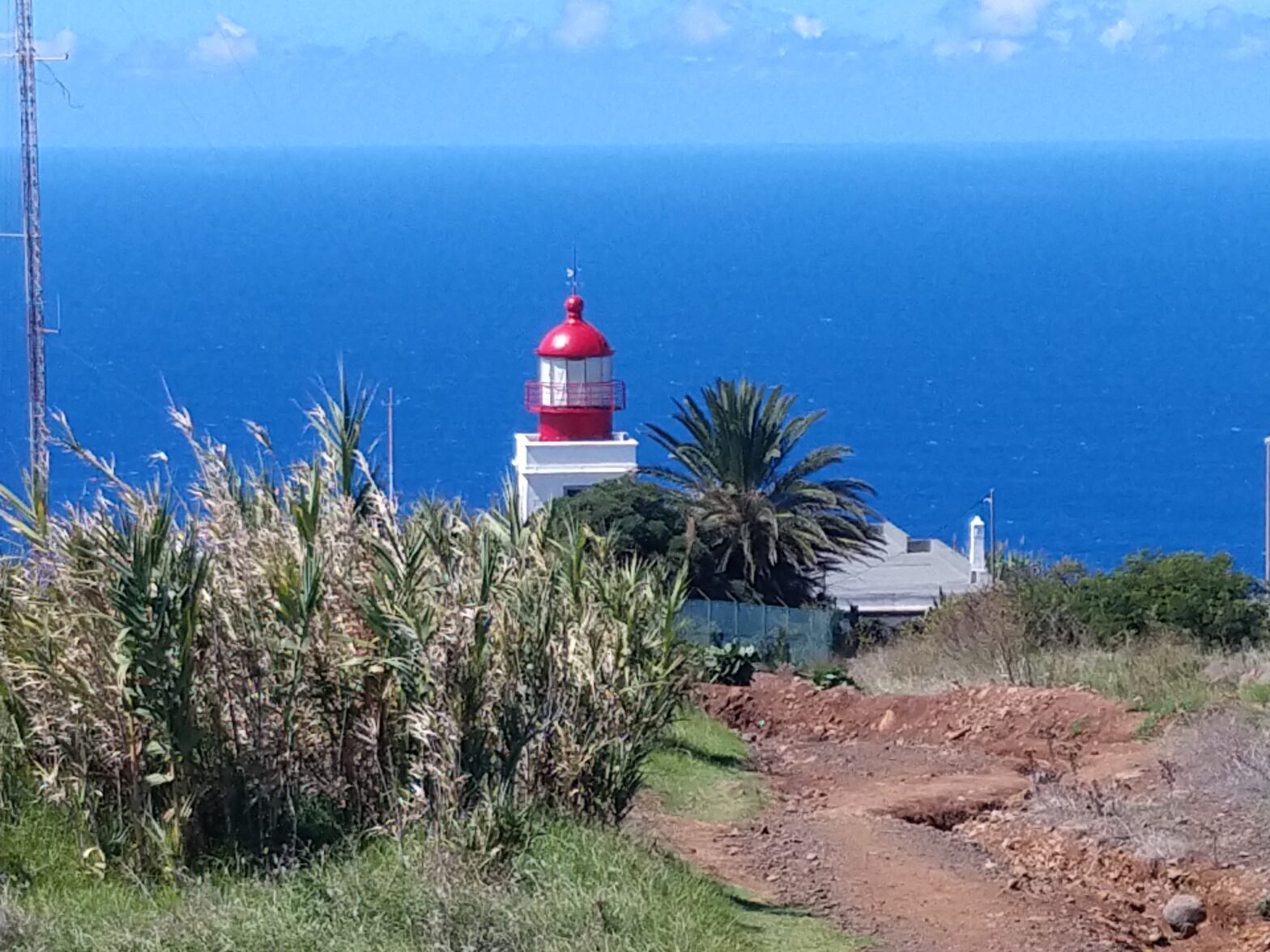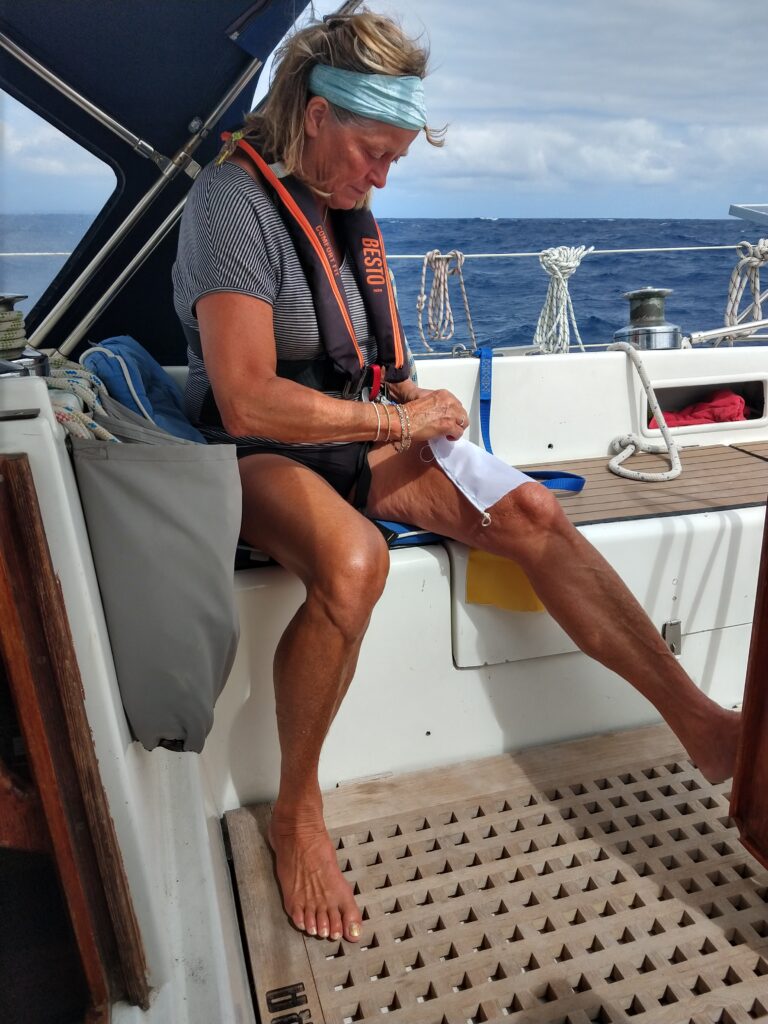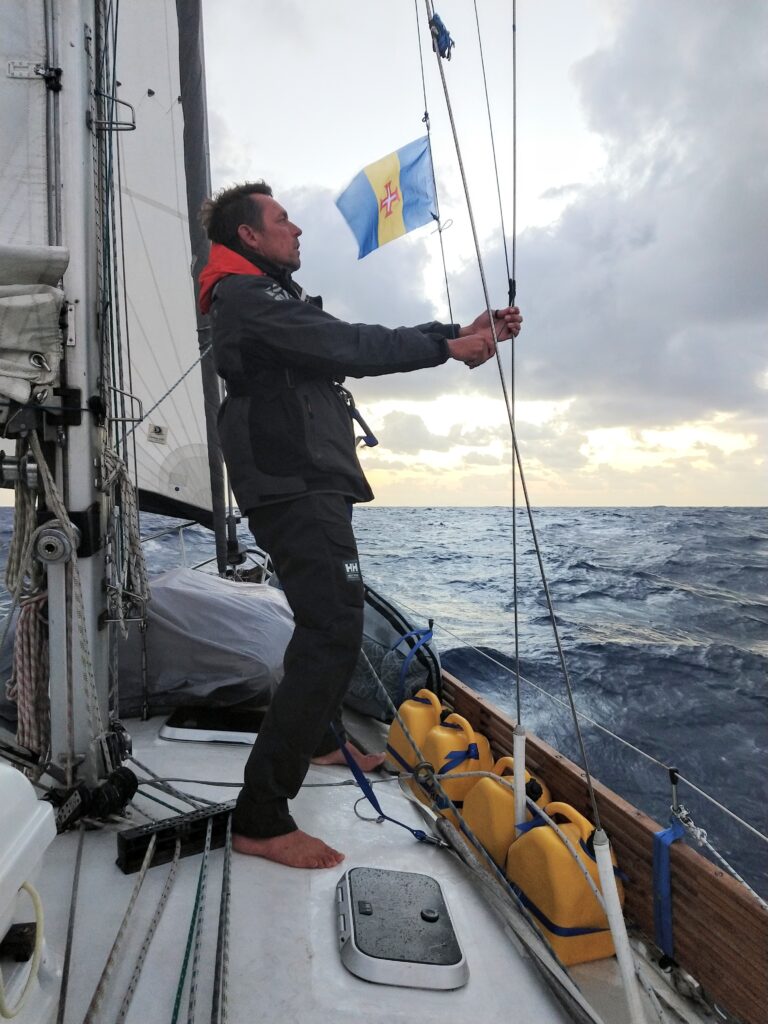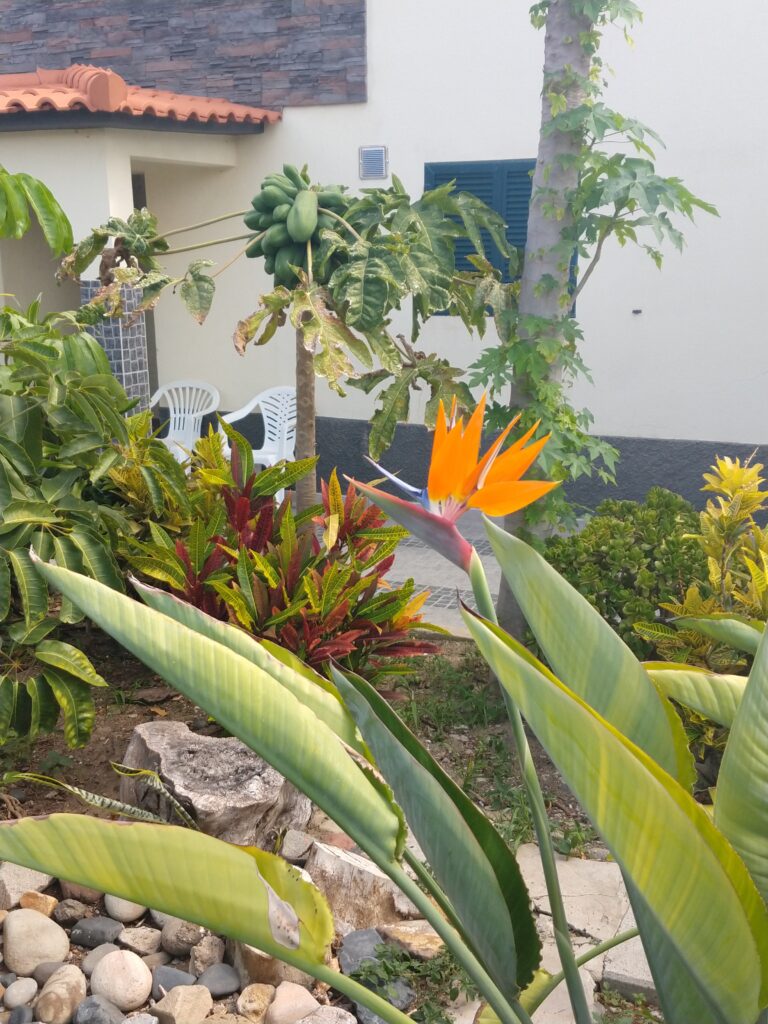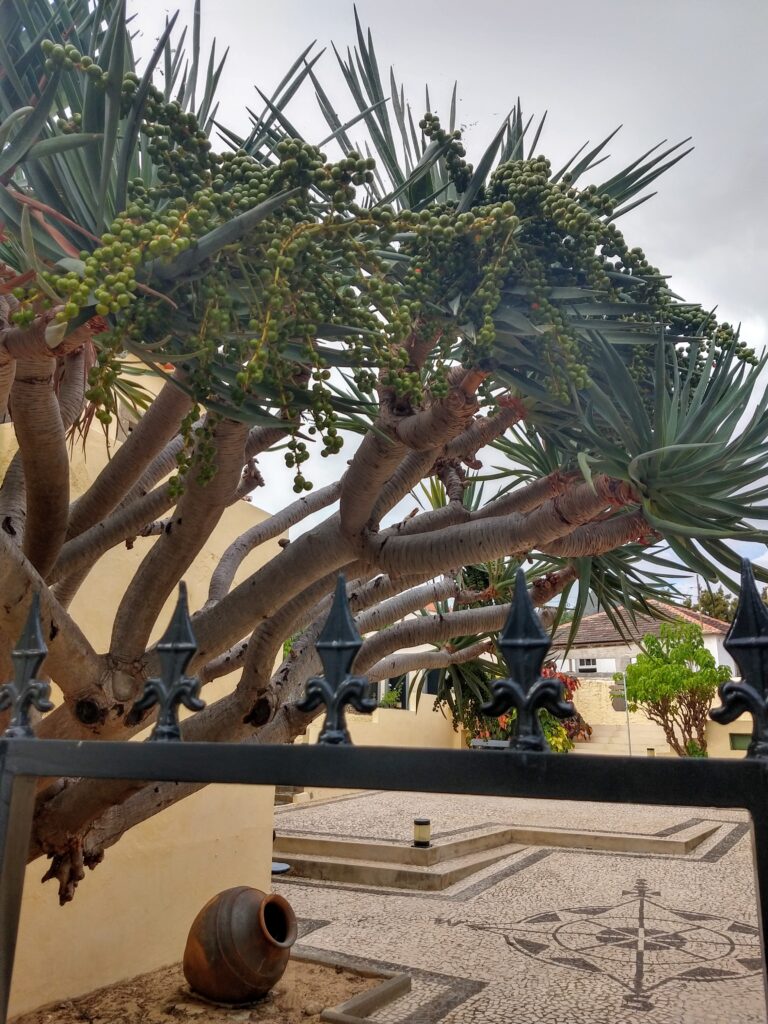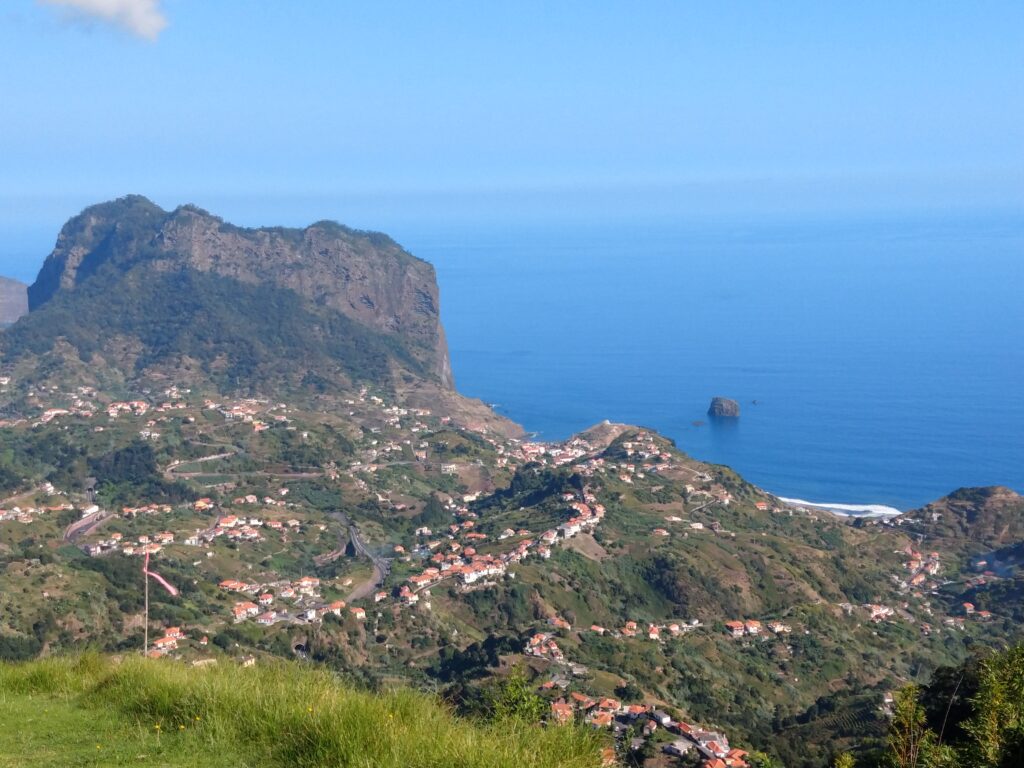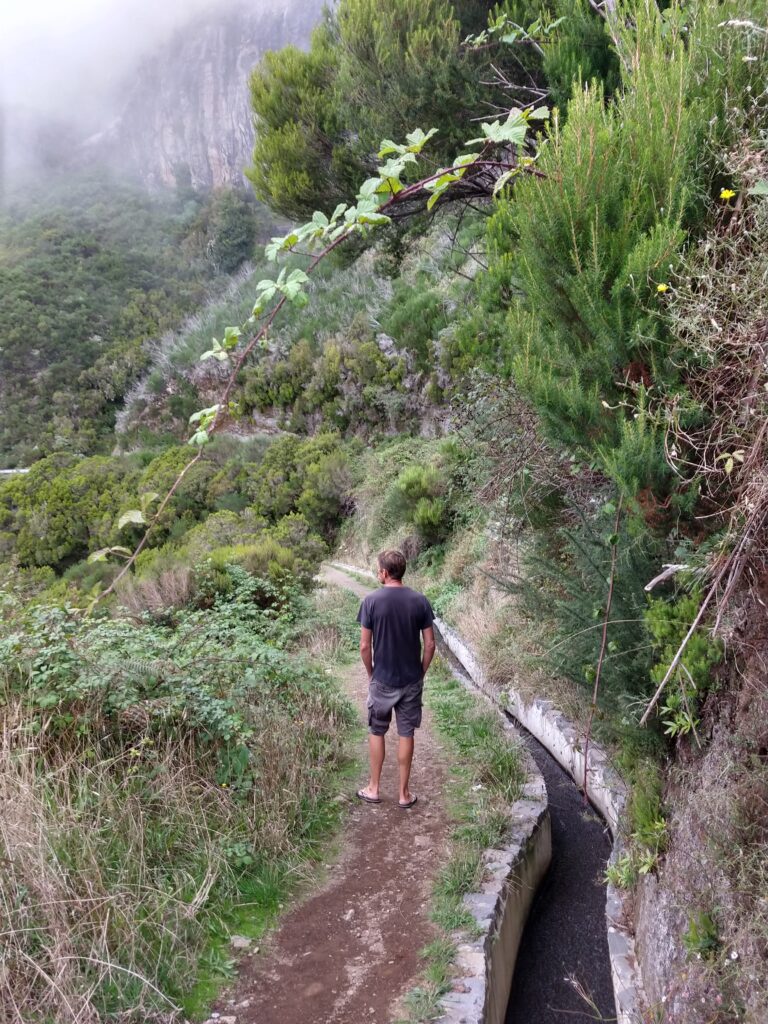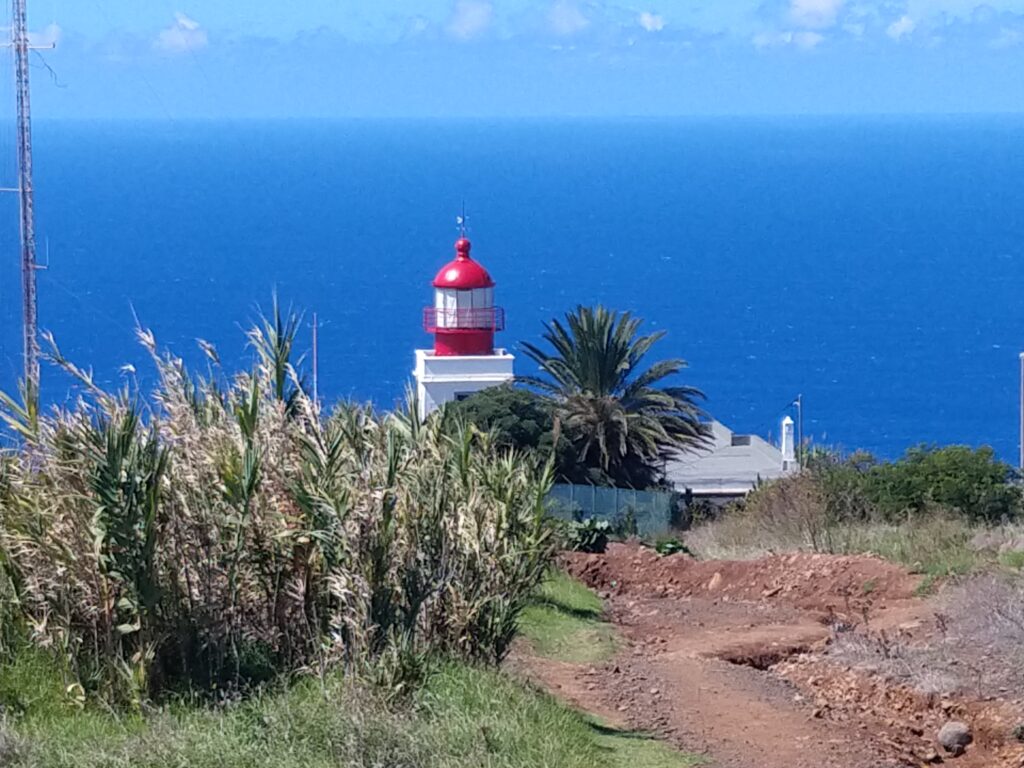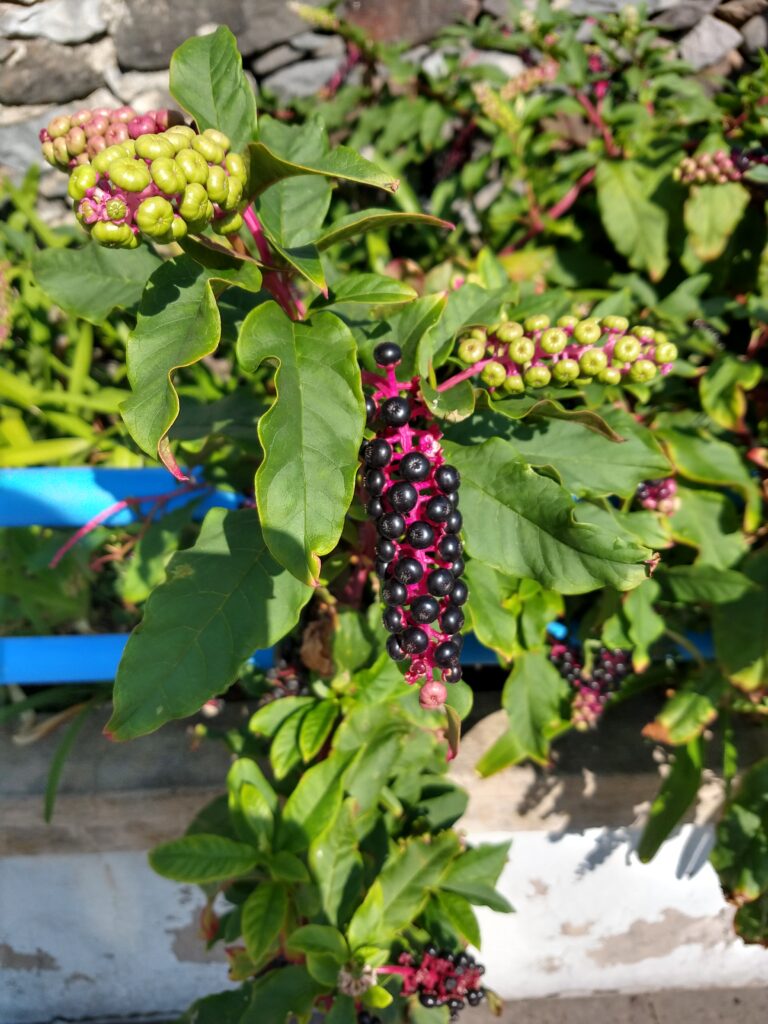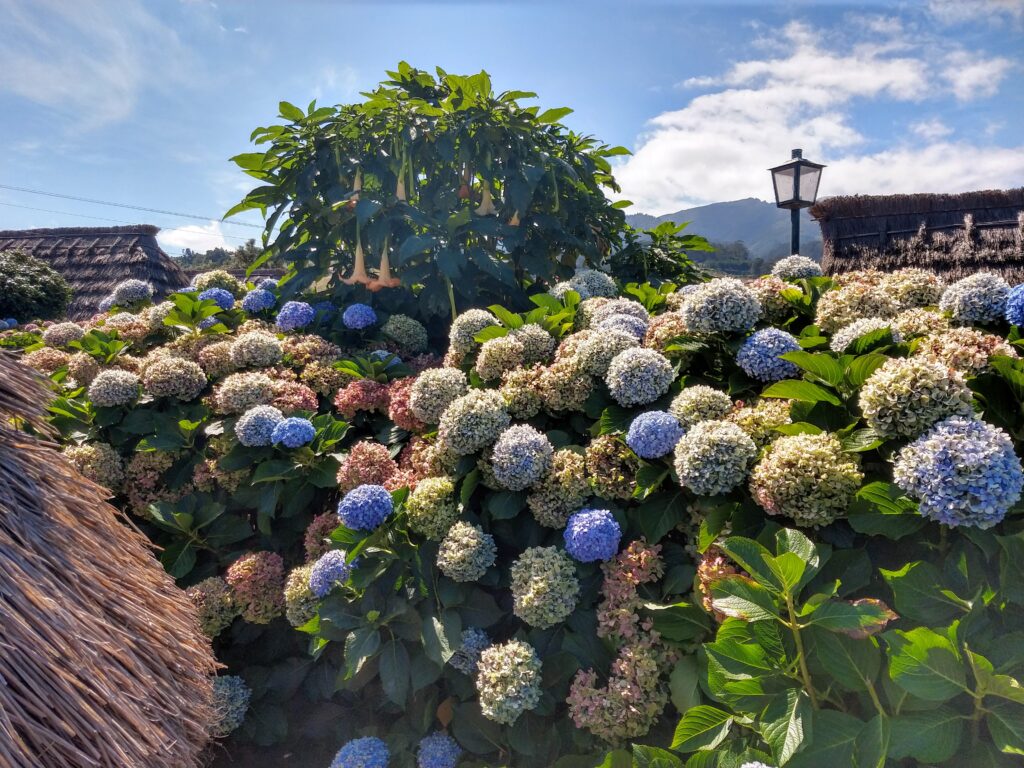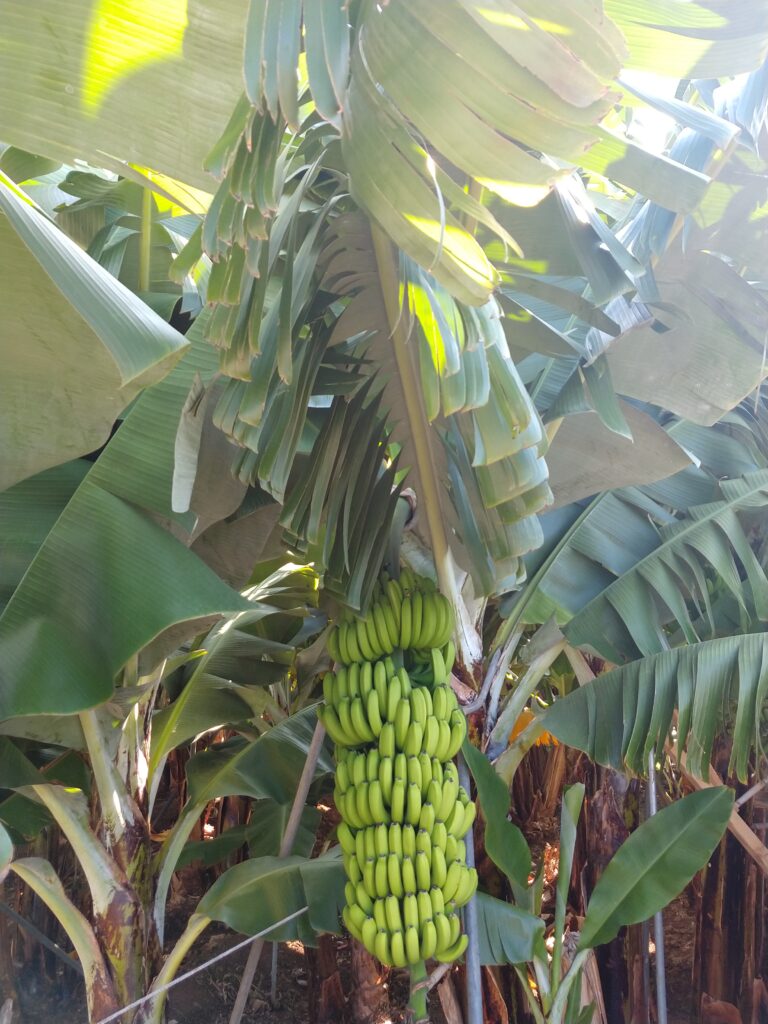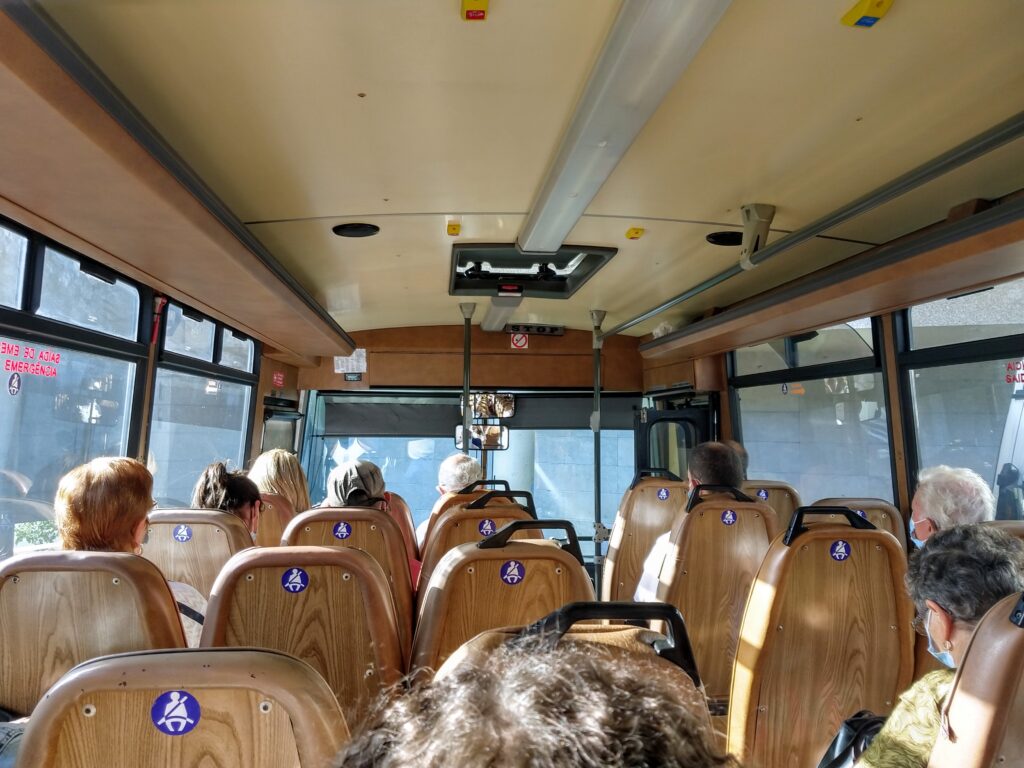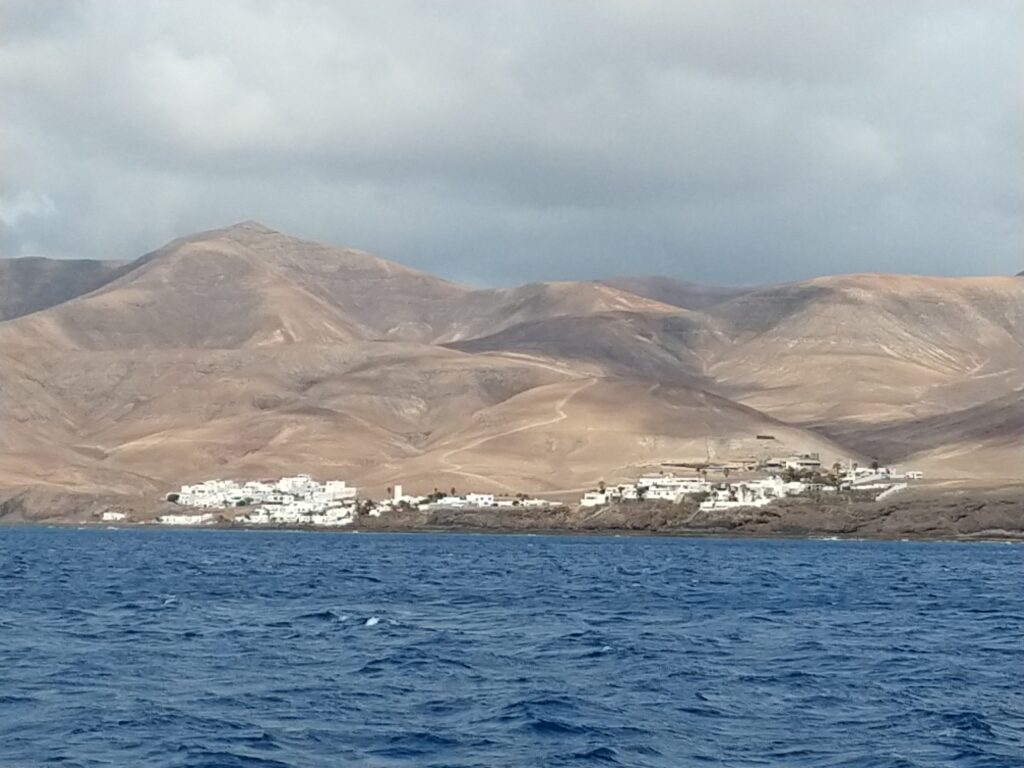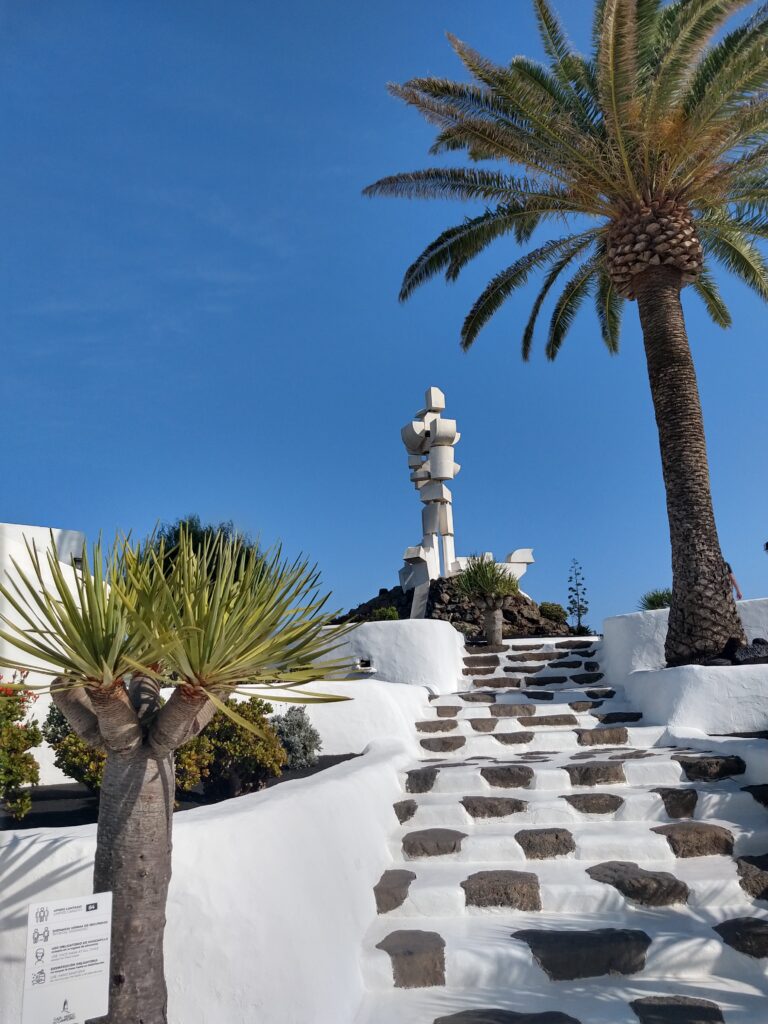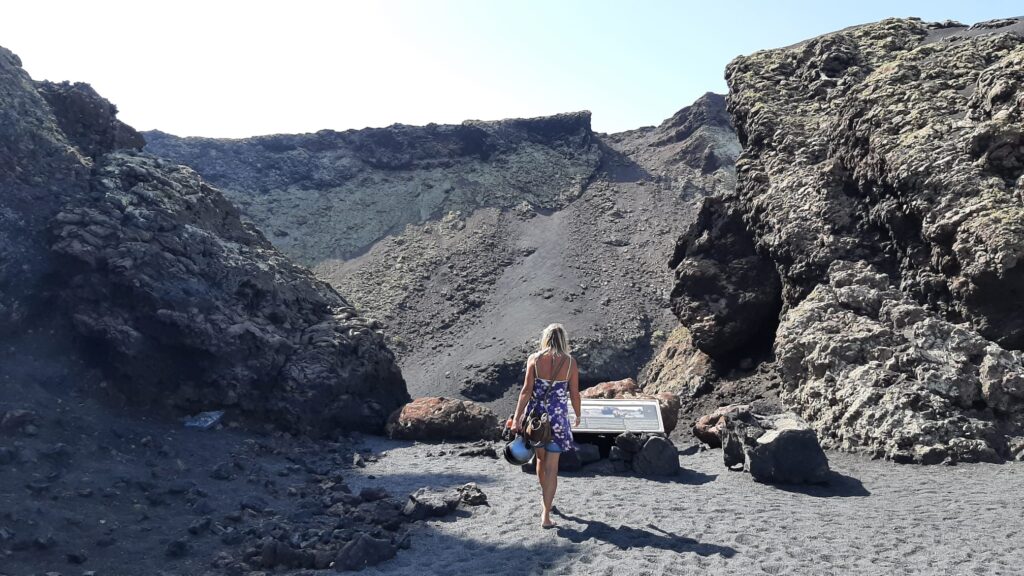After the anchorage at Porto Santo, we cross over to the big island of Madeira. We have anchored in Porto Santo nice and free, with a large number of Norwegian yachts around us where parents with children are apparently also busy crossing to the Caribbean (the ARC flag is flying on their boats; ARC = Atlantic Rally for Cruisers, an organized trip for yachts to make the crossing together). This gives a lot of excitement of children swimming and sup-boarding, nice!
It turns out that all ports in Madeira are quite full; luckily, we can go to the marina Quinta do Lorde on the easternmost tip of Madeira. It turns out to be a huge holiday complex with a marina. However, this complex has been unused for some time; hotel, apartments, shops, all empty. It has become a kind of ghost town. Fortunately, the harbor is quite full with especially many French boats; in the morning and evening it is a bit reminiscent of French campsites when everyone has their walk to the shower building.
The whole is quite remote. On the 1st day we walk to the next village of Canical to do some shopping and immediately experience the enormous differences in height on Madeira. We climb and descent quite a bit in the heat of the island and when we can rent his car through Carlos from the harbor for 2 days, we also notice how steep up or down the roads are here. But how beautiful it is here! All roofs have the same red/orange colored roof tiles, everywhere you see banana trees, bougainvillea, hydrangeas, oleanders and other exotic plants. It sometimes reminds me a bit of Tanzania with all that fertile green of the trees and shrubs, the mountainous and all those banana trees. And again and again the Atlantic Ocean looms in its beautiful blue splendor. By the way, the extreme eastern tip of the island is quite barren except for the palm trees that have been planted along the road. The north of the island is rugged and shaded by the mountains in the afternoon and the center of the island is rather uninhabited. The coast has steep cliffs; Madeira has virtually no sandy beaches.
Funchal is the capital of Madeira and is located about 30 km from our marina. It takes us about an hour and a half to get there by bus, so we got up on time and got on the bus. Never experienced before: a bus with a row of 3 seats next to each other on the driver’s side (where we can barely fit our legs between) and on the other side of the bus a row of 2 seats next to each other. A tourist couple with both backpacks finds it quite difficult to make their way through the narrow aisle to the exit. The bus driver and the passengers wait quietly and do not show themselves in a hurry and the couple eventually gets there.
Funchal is small-scale and friendly with beautiful pavement and buildings. And clean! The old quarter with many restaurants is very tourist oriented with the waiters trying to get you to their table. Not really attractive. We take the cable car up for a view over the city. It is remarkable that many people in Madeira speak quite proper English.
It’s funny that in the different marinas you keep running into people you’ve seen before. Those French with that cute little boy, those Norwegians with those 2 kids with their phones or those 2 huge white Germans…….
When it’s a bit of a cloudy day, for the first time in weeks, we do a bit of odd jobs, some laundry and work behind the computer. And think a little about the continuation of our adventure. We have also made a reservation for a port on the Canary Islands, because we hear from others that the marinas are fairly full everywhere. It will be Puerto Calero in Lanzarote, for which we have a crossing of about 300 nautical miles ahead, which we start on Saturday October 2nd.
Crossing to Lanzarote and imprerssions of Lanzarote
Saturday at 10 am we raise anchor and leave Madeira behind us. We had a great time on this beautiful island and the anchorage on Porto Santo was also great! Every time we leave, I feel something of melancholy about what you leave and at the same time you are curious about what is to come. Attaching and detaching again and again…….
The crossing is quite tough with constantly changing winds, which means that el capitán has to make adjustments to the sails again and again and hardly gets to sleep. When we enter the port of Puerto Calera on Monday at 5.30 pm, we take a shower, get a pizza and go to bed at 9 pm. By the way, we are still in the same time zone as on Madeira and in Portugal, so 1 hour behind NL time.
Lanzarote is a strong contrast to lush Madeira. The island shows black or brown in all kinds of gradations, no tree, no animal to be seen. César Manrique (1919-1992) somehow managed to make all the houses white with doors, shutters and frames in brown, green or blue and then the whole village or neighborhood in the same color scheme. The houses are thus white, square with flat roofs and walled yards/gardens. The latter are covered with palm trees, bougainvillea and other colorful shrubs. They look like little oases supplied with water by human hands.
On a scooter we visit the Parque National Timanfara, the main attraction of the island where between 1730 and 1736 a major eruption of the volcanoes took place. It creates a depressing, bizarre, black, surreal landscape.
On the way on the beautiful, gently sloping roads we see many cyclists and in the park along the side of a road a lot of dromedaries for a camel ride for the tourists who visit the park.
When we move to a harbor in the south of Lanzarote, we see many boats with the now well-known ARC flag that will soon gather on Gran Canaria in Las Palmas for their joint crossing to the Caribbean. It is therefore a bit more lively in the harbor with boats that are manned / femaled. We also see a lot of boats that are collecting dust in the ports.
